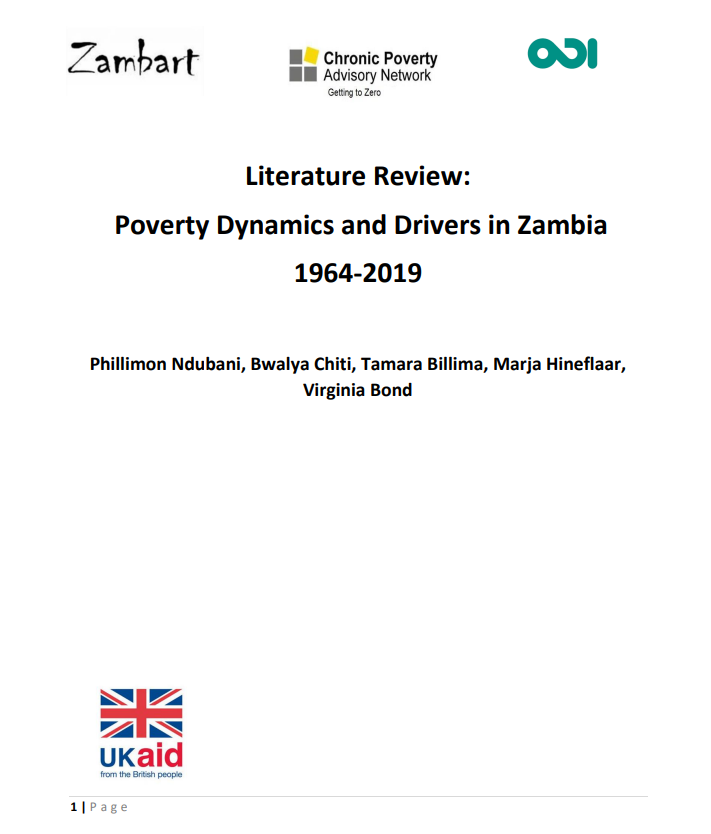The Zambian Chronic poverty study, for which this literature review has been conducted, investigates and interrogates chronic poverty dynamics in Zambia. Although chronic poverty has existed for a long time, no specific study of this magnitude and scope has been conducted to provide a comprehensive understanding of chronic poverty dynamics in the country. The study has two objectives as follows:
The study seeks to establish a dynamic understanding of the chronically poor in the post-2010 period in Zambia, to draw conclusions about who is being left behind, why and what can be done about it.
The second objective is to establish a qualitative baseline for future monitoring work, similar to the WIDE project in Ethiopia.
The key research questions include:
Why has extreme poverty (and hunger) remained at such a high level and so widespread especially in rural areas, despite economic growth, political stability, and a reasonable human development record?
To what extent is this accounted for by chronic poverty or by mobility around the poverty line or different combinations of these in different places?
What are the main sources of vulnerability, and how do these combine to impoverish or allow only temporary escapes from poverty where this is the case?
Why are women headed households typically poorer than men-headed households? And what is the contribution of gender and other social relationships to sustained escapes/chronic poverty/impoverishment?
Urban poverty is held to have declined faster than rural. Why is this? Is urban poverty and wellbeing correctly estimated? What results do alternative measures of urban poverty give?
How are policies and major programmes contributing to poverty dynamics?
This literature demonstrates that, despite a favourable economy at Independence and some years afterwards, Zambia’s poverty levels have ranked among the highest in the world. Over the past five decades, Zambia has undergone several somewhat distinct policy regimes, each with varied implications on poverty. This review is divided into two sections. The first section analyses the performance of the Zambian economy over five decades, from 1964 to 2016, to reflect on policies and strategies that drove, sustained and/or reduced poverty levels and to place Zambia’s economic growth, structural changes and declines in a historical and socio-economic policy perspectives. The second section provides a conceptual and methodological overview, a detailed analysis of the historical and present poverty conditions and trends including ongoing and future poverty reduction strategies and interventions.
Authors: Phillimon Ndubani, Bwalya Chiti, Tamara Billima, Marja Hineflaar, Virginia Bond

